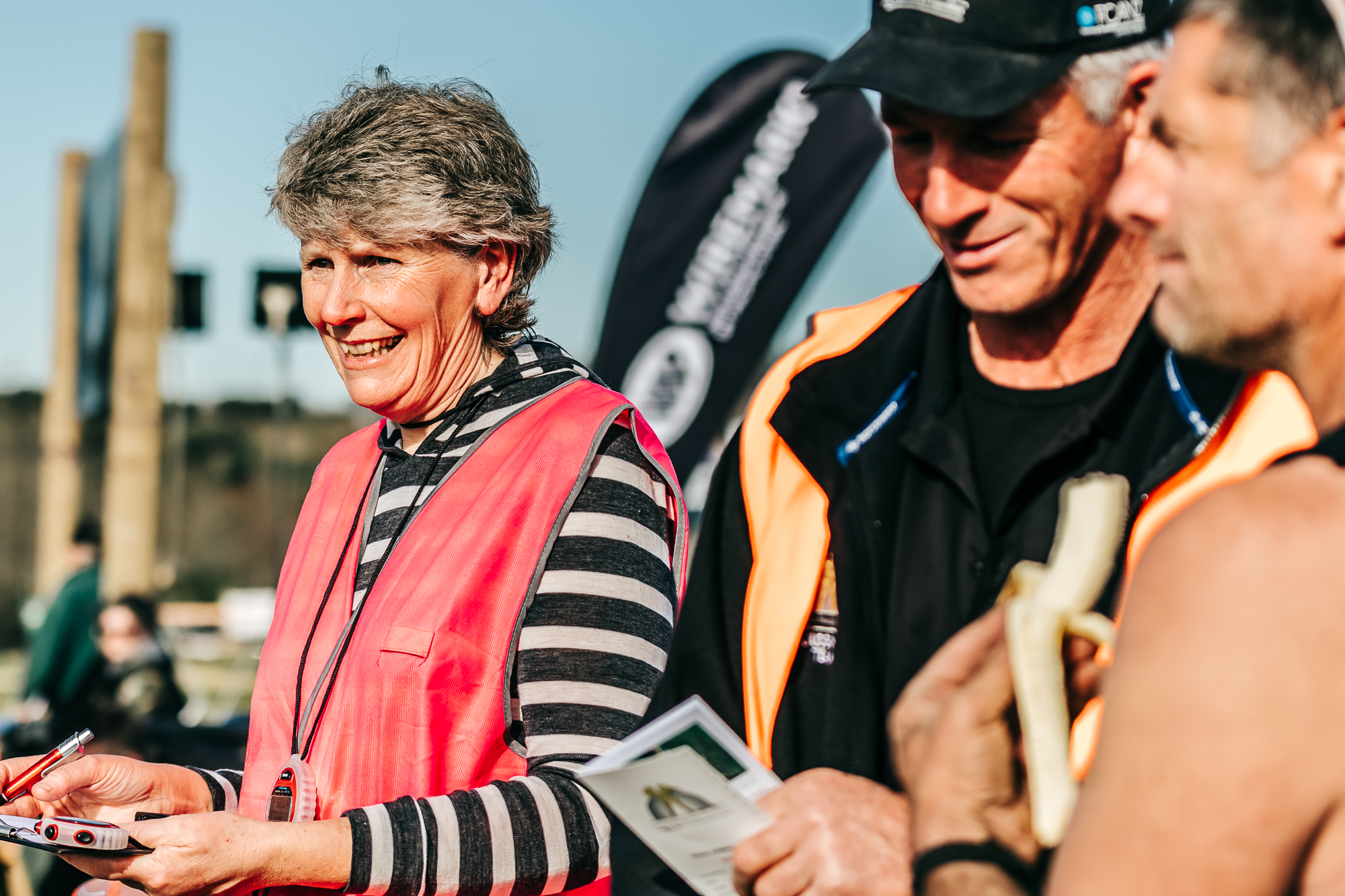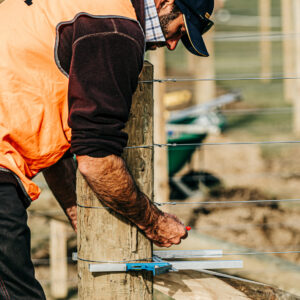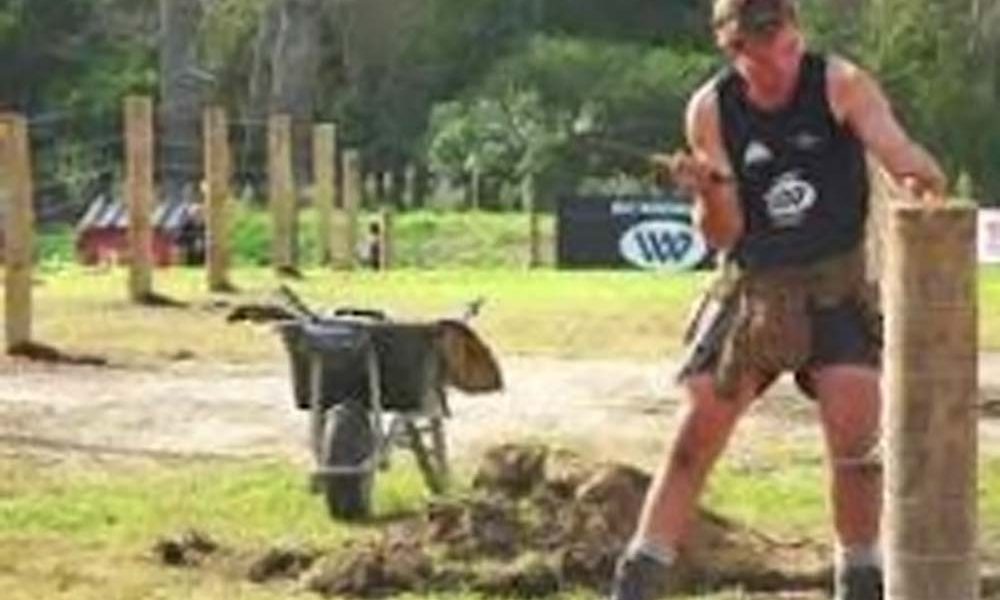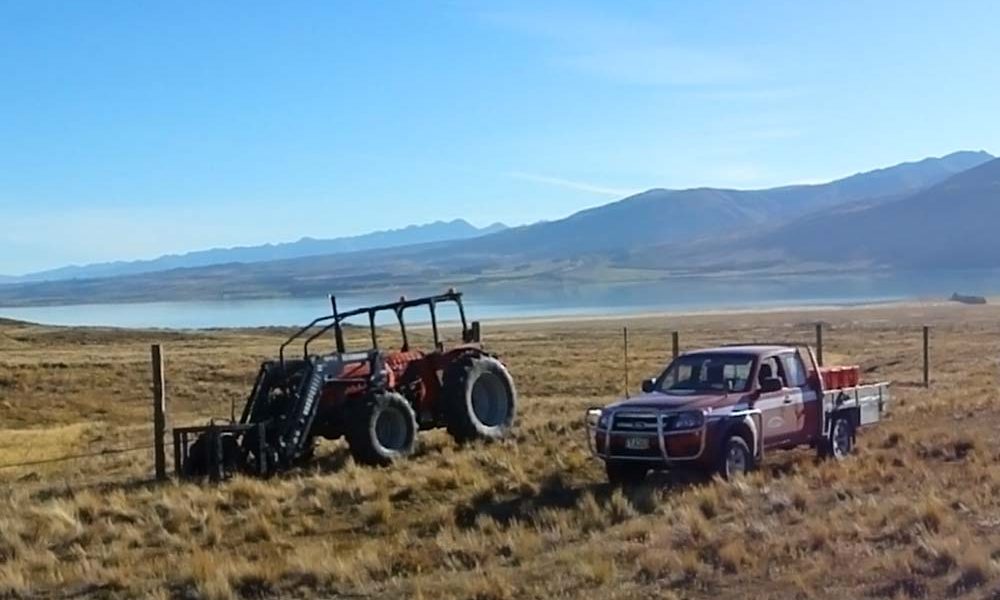
What kind of person is motivated to take unpaid leave from work for up to a week, travel many miles, volunteer themselves during this time, receive some cost remuneration, and stand around in the elements to judge an industry showcase? An NZ Fencing Competitions (NZFC) Competition judge.
NZFC organises and/or supports local and regional level competitions, and there are a number of NZFC judges who travel to these events. They are a dedicated bunch, with many being ex-competitors or those who run fencing companies, ex-builders, and industry sales reps (yes, that’s you, Warren Herlihy and previously Hugh Morrison).
Fieldays® National Fencing Competitions
The set-up for Fieldays® National Fencing Competitions starts for Chief Judge Owen Petersen on the Friday of the week prior, with layout for both the heats and the finals. Helping year after year are Fieldays® volunteers like Pete Anderson and Campbell Clarke. Norwood loans a tractor and front-end loader, delivering this on site, which is greatly appreciated in the busy, congested environment of Fieldays®.
On Sunday, there is a judges’ meeting to go over judging standards and to allocate judging aspects to the individuals on the judges’ team. The judges’ team normally consists of eight judges, plus four technical judges who carry out the strainer push test.
On the Monday of Fieldays® week, the qualifying heats take place, with the singles finals in the morning and the doubles heats in the early afternoon. While judges stand on hand observing safety, tidiness, or if a competitor calls out if they strike something in the ground, there is also some leniency in giving new competitors some direction, if required.
Once the first competitor finishes, some of the judging aspects can commence. Tension gets tested when the competitors have finished, appearance judging starts, moving along the lines. Then the technical judges come along; testing strainer push, and testing footings via an apparatus that lifts the posts and assesses the holding of the foot in the ground. There is also a sideload test on the ramming of the post, with a weight on a frame off the side of the post to measure defection.
Once an NZFC competition judge has finished marking their particular aspect, they collate the scores, double-check and submit their judging booklets to the scorer, who enters the results into a scoring computer system that was developed with the help of Wendy Morgan.
Over the past decade, NZFC has designed judges’ booklets for information resources and recording the scores into column grids. There has been much work on developing the judges’ booklets, instigated by Paul Van Beers, who is on the NZFC Judges Committee, and the process to streamline the judging standards is ongoing.
Owen Petersen, NZFC Chief Judge, comments “What’s required to be a NZFC judge is a willingness to give back to the industry, be consistent in their pattern, and not biased – the focus is on judging the line number, they are not judging the person. The ability to pick up and spot the details and see something easily. Much of the judging is done by measuring, gauging and a lot of detail by eye.”
Owen goes on to say, “Fencing competitions are highly recommended to help with workmanship, self-satisfaction and improving your approach to your everyday work and systems. It’s rewarding to see these fencers develop and turn up to competitions around the regions, they seem to get a lot out of the effort.”
Written by Debbie White from NZFC
Published in WIRED issue 73/JUNE 2024 by Fencing Contractors Association NZ
You may also like: Development of a World Championship Doubles Competition at Fieldays®
Read WIRED online
Follow us on Facebook
© Fencing Contractors Association NZ (FCANZ)













